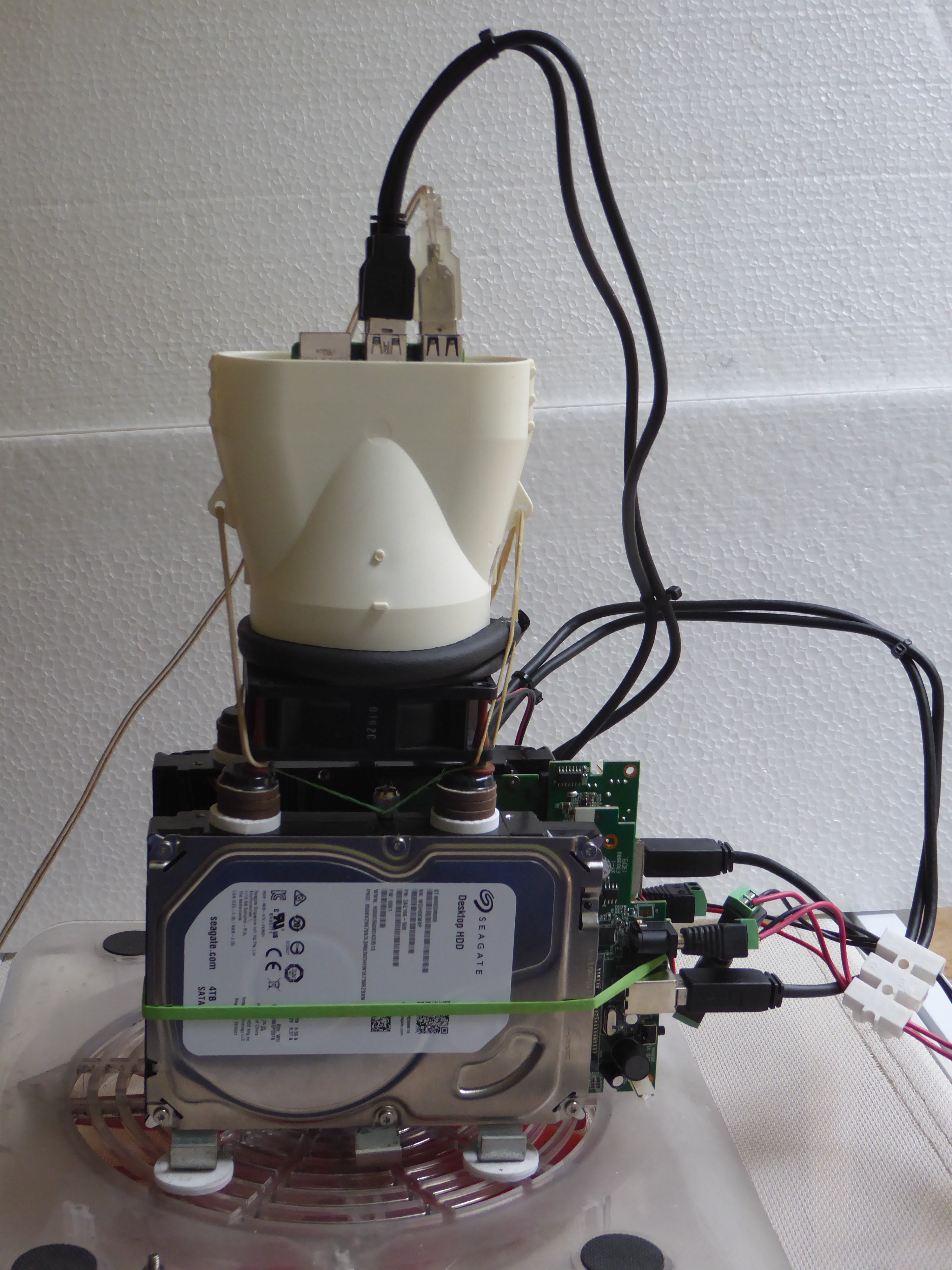Hi folks,
Yes, yet another "update" (seems I can't stop tinkering with this thing :)
This one's codename is "the more green rubber bands the better".

So, after I finished the system/software set-up for the NAS, I became dissatisfied with the temperature readings I was getting for the drives.
This was clearly due to the lack of air vents and fans in the enclosures (these will make some fine raspberry cases some day :-).
At the rear behind the round grill they have a holder for a 3x3cm fan, and I had one lying around so I gave it a try.
But the airflow was non-existent and even at 5V the racket was unbearable.
So I opened the enclosures and extracted the disks with their SATA2USB3 boards.
While mulling over a new mode of assembly I "saw the light" :
if vertical cooling is good for a raspberry 4, it should also be good for hard disks, right ?
And it so happens I had this large "laptop cooler" USB fan in the "will come in handy someday" parts bin...
The fan is not loud but quite large at 20 cm in diameter : so the airflow will cover the entire length and both sides of both disks.
It can be powered by an USB2 port on the Pi.
I also found some metal parts with rounded ends like feet, which I screwed to the bottom of the disks as a stand.
This assembly is rock-stable.
When I placed the Pi/funnel/fan assembly and its feet on top of the disks, however, that was anything but :-)
So I added the two fat screws at the top center of the disks, then wrapped a rubber band around both, then again around each of the fan rubber feet... definitely not as easy as it sounds :-)
Also, I had a problem with one of the SATA/USB boards, which tended to lean off the SATA port due to the weight of the cables.
(these board are normally screwed to the enclosure base and also held in place by the disks).
So of course I just added another rubber band around each disk and its board, to keep them snugly mated :)
After that I did a two-way rsync (local redundancy) between the two drives, and was happy to see that the temp levels and stability were in a totally different league than those I had when using the enclosures.
So there you have it, a two-tier vertical cooling powerhouse... it's getting bigger and higher with each upgrade, gotta stop somewhere :-)
 fpp
fpp
Discussions
Become a Hackaday.io Member
Create an account to leave a comment. Already have an account? Log In.